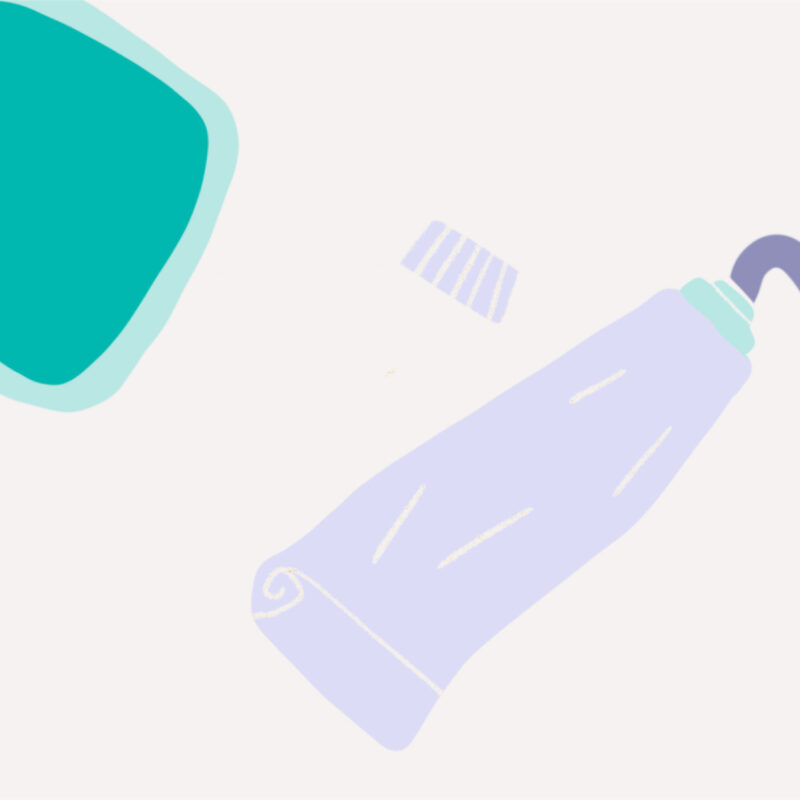Urinary incontinence in menopause: are you ignoring the symptoms?
How to spot symptoms and manage urinary incontinence during menopause
- Urinary incontinence and bladder problems affect up to six million people in the UK
- Risk factors include falling hormones in menopause, pregnancy and obesity
- Advice on how to spot symptoms, plus management strategies
If you have noticed more urine leaks and accidents since you hit the perimenopause and menopause, then you are definitely not alone.
Declining levels of hormones, especially estrogen, can affect your continence, which is the ability to control your bladder and when you urinate.
The impact can range from inconvenience to a devastating effect on quality of life.
‘Urinary incontinence can be a difficult thing to talk about,’ says Newson Health GP and Menopause Specialist Dr Clair Crockett.
‘But it is incredibly common, especially around the menopause. It can be really upsetting and distressing and have a big impact on women’s lives, leading to lots of planning, worrying and anxiety.’
Here we look at what can lead to incontinence during the perimenopause and menopause, signs to look out for and where to seek help.
RELATED: Pelvic floor health during the menopause
What is urinary incontinence?
Urinary incontinence is when you unintentionally pass urine. There are a number of different types, and they can all occur in a range of severity, from small leaks to larger volumes.
It is estimated that up to six million people in the UK are affected with bladder and incontinence problems – so if you have symptoms, please know you are not alone.
What are the symptoms?
There are number of different types of incontinence – here we look at the most common.
Stress incontinence is when you leak urine when your bladder is put under extra pressure, and could happen when you laugh, sneeze, lift something heavy or exercise.
While it is normally small amounts of urine that leak, it can be larger volumes, especially if your bladder is very full. This happens when the pressure inside your bladder is greater than the strength of your urethra (the tube which carries urine out of your body) to stay closed.
Urgency urinary incontinence is urine leakage after a sudden, compelling need to urinate that is difficult to delay while you find a toilet.
Mixed incontinence is when you have both symptoms of stress incontinence and urgency.
Overactive bladder (OAB) is defined as urgency that occurs with or without urgency urinary incontinence, which comes with the need to frequently wee, especially at night.
What can put me at higher risk?
Factors which stretch, injure or put extra pressure on the muscles in and around your bladder and pelvis all contribute to a higher risk, including:
- ageing: as you get older your muscles can weaken – although this doesn’t mean you should accept it as a natural part of ageing – and this risk starts to increase around the time of the perimenopause, as your estrogen levels begin to drop
- pregnancy and vaginal birth: If you’ve been pregnant your risk of bladder incontinence increases, and it goes up again if you had a vaginal birth
- having a hysterectomy
- cancer treatments in the pelvic area
- prolapse: a common problem when some of the tissues from your pelvis slips down slightly and bulges into your vagina
- family history of incontinence
- Obesity, and smoking now or in the past, can all increase the risk of having bladder weakness [1]
RELATED: Podcast: menopause and the pelvic floor
How many women does incontinence affect?
Research has suggested the issue is incredibly common. One study looking at women aged around 35 to 55 years of age have found that 30% to 40% say they sometimes leak urine [1].
Around 70% of postmenopausal women have genitourinary syndrome of the menopause (GSM) – this covers a range of symptoms, including an increase in the need to urinate and the urgency to do so [2].
‘Often the perimenopause and menopause can exacerbate a problem that was already there’
Dr Clair Crockett
Why can urinary incontinence happen during the perimenopause and menopause?
During the perimenopause your levels of estrogen, progesterone and testosterone, which are produced in your ovaries, start to decline until they reduce further during the menopause.
The loss of these hormones, particularly estrogen, causes the muscles which help support your bladder, known as the pelvic floor, and the muscles which close your urethra to lose strength.
This loss of strength and tone diminishes the bladder’s ability to securely carry urine, says Dr Crockett.
At the same time, the loss of the hormones also affects the epithelium, the cells which form the top covering of the bladder, the urethra and the vulva, making them more sensitive, thinner, less flexible and less robust.
RELATED: Video: urinary symptoms and pelvic floor
This extra sensitivity can increase overactive bladder symptoms and bring on strong feelings of urgently needing to urinate.
‘Often the perimenopause and menopause can exacerbate a problem that was already there,’ says Dr Crockett. ‘A lot of women struggle with continence after pregnancy, and then when their estrogen levels start to decline in their 40s it can start to worsen.’
What treatments can help?
First of all make an appointment with your GP to get a proper diagnosis and treatment advice.
‘Make sure you seek help and as soon as possible, as there are lots of things that can be done,’ says Dr Crockett.
Replacing estrogen by taking HRT and/or using vaginal hormonal preparations can help restore strength and tone to your muscles and tissues in your pelvic area.
Vaginal estrogen, applied topically in low doses to your vagina, and HRT via skin patches, skin gels or tablets, can lead to significant improvements, says Dr Crockett.
Vaginal DHEA pessaries, which convert into both estrogen and testosterone, can also be beneficial. Using vaginal hormones can increase the concentration of hormones in your urinary system and pelvic floor muscles.
You may benefit from having both vaginal estrogen and systemic HRT, or may start with a single approach depending on your symptoms, personal preferences and medical history.
Adding in testosterone, which has a role in the strength of your pelvic floor and which also declines as you age, can also help some women improve their continence [3].
‘Receiving the right treatment can be a journey, there may need to be different preparations and types of hormones tried along with these lifestyle changes to find the combination that works best for you’
Dr Clair Crockett
What else can help?
While HRT can have an impact on symptoms for many, there are a number of lifestyle factors that will also help reduce your leakages whether you take HRT or not.
Pelvic floor exercises can help, and seeing a specialist physiotherapist for personalised advice can also be beneficial.
Reduce caffeine intake from drinks such as coffee, tea and some soft drinks, and also avoid fizzy carbonated drinks, which can irritate your bladder and bring on feelings of urgency. Aim to be hydrated but don’t drink excessive amounts of fluid as it will put more pressure on your bladder.
Avoiding irritation of the delicate skin of your vulva and around your urethra can help. Perfumes, powders, soaps, deodorants, spermicides and many brands of lubricants often contain chemicals that can irritate and should be avoided [4].
In addition, tight-fitting clothing and long-term use of sanitary pads or continence pads, which can seem part of solution, can worsen symptoms by rubbing the delicate skin.
Vaginal and vulval dryness can irritate the urethra, so getting this treated and well managed – and vaginal estrogen pessaries, creams and gels can manage the condition well for many women – can help with continence while also bringing comfort to a sore area.
Vaginal moisturisers and lubricants, which are available over the counter, can help bring you relief.
Intimate washes or intimate products are also not needed and dry out these delicate areas, so you should use a simple emollient to wash with such as Cetraben.
RELATED: Podcast: genitourinary syndrome of the menopause
‘It’s important to make changes like this alongside hormonal treatments to get the maximum relief from symptoms,’ says Dr Crockett. ‘Receiving the right treatment can be a journey, there may need to be different preparations and types of hormones tried along with these lifestyle changes to find the combination that works best for you.’
If non-surgical treatments for urinary incontinence are unsuccessful or unsuitable, surgery or other procedures may be recommended [5].
References
1. Danforth, K.N., Townsend, M.K., Lifford, K., Curhan, G.C., Resnick, N.M., Grodstein, F. (2006). ‘Risk factors for urinary incontinence among middle-aged women’, American Journal of Obstetrics and Gynecology, 194(2), pp.339–45. doi.org/10.1016/j.ajog.2005.07.051
2. Nappi R.E, Kokot-Kierepa M. (2012), ‘Vaginal Health: Insights, Views & Attitudes (VIVA) – results from an international survey’ Climacteric 15 (1): 36-44.
3. Kim, M.M., Kreydin, E.I. (2018) The Association of Serum Testosterone Levels and Urinary Incontinence in Women. The Journal of Urology, 199(2), pp522–27. doi.org/10.1016/j.juro.2017.08.093
4. British Society for Sexual Medicine (2023), ‘Position Statement for Management of Genitourinary Sydrome of the Menopause (GSM)
5. NHS.uk (2022), ‘Surgery and procedures – Urinary incontinence’


![Looking after your pelvic floor [Video]](https://balance-menopause.com/uploads/2021/10/Mask-Group-19-800x800.jpg)

